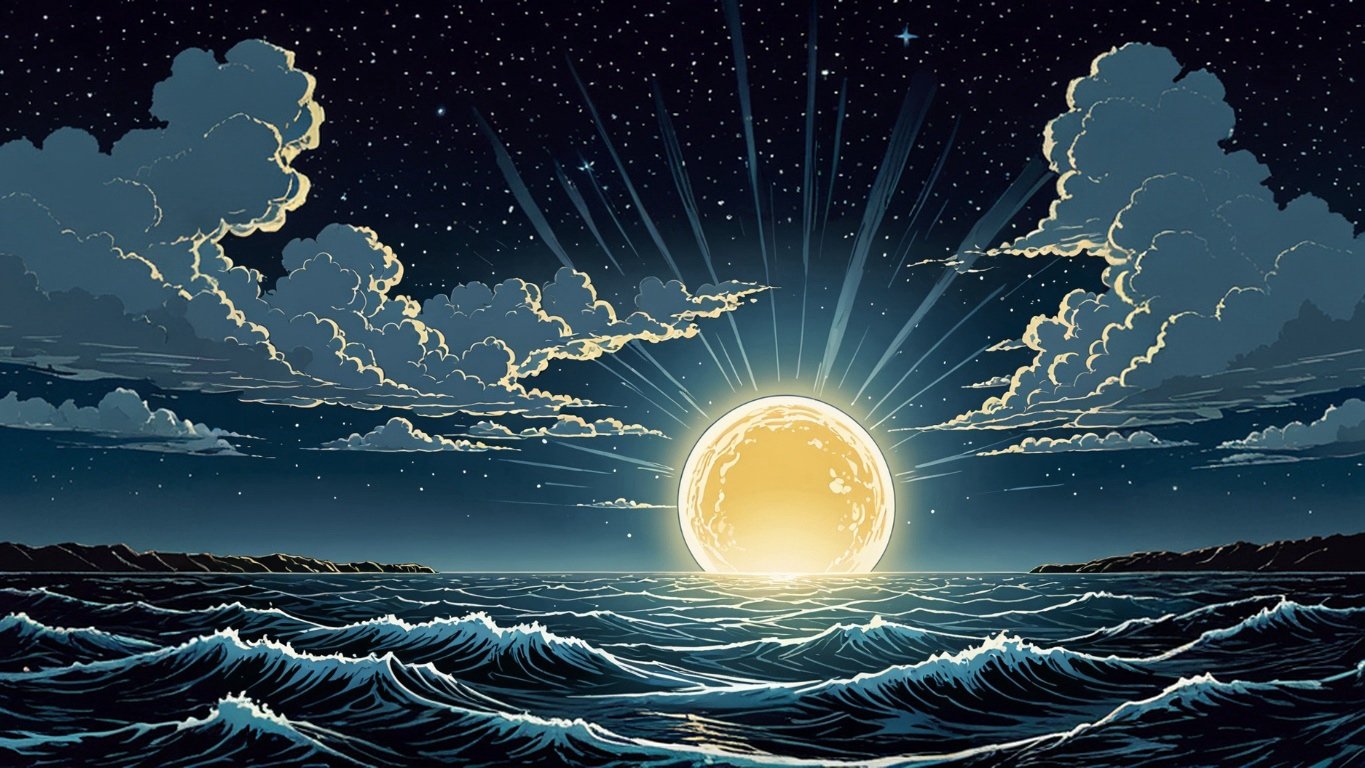The Good Friday Lights
It was the evening of Good Friday, April 14th, 1843 and the schooner Jane & Mary was in the ice east of Baccalieu. A strong wind was blowing from the southwest. The full moon shone bright—its lower edge obscured by a thin layer of cloud.
Then, from behind the cloud, something emerged.
A Fireball
A brilliant sphere of fire seemed to roll into view. It dwarfed the moon, glowing with a fierce, flame-coloured light. For a moment, the expanse of sea ice was as bright as midday. The schooner’s deck, the faces of her crew — everything was bathed in golden light.
Slowly, the burning orb moved to the south. Then, as if pulled by some unseen force, it curved toward the sea. When it struck the ice, it shattered into a thousand glowing fragments that flared for an instant before burning out.
The crew barely had time to comprehend what they had seen when another light appeared. Smaller and paler than before, but following the same slow descent. It too vanished into the sea in the very spot where the first had died.
There was no sound, no explosion — just the sound of the ice grinding against the hull.
There was no sign that anything unusual had happened, at all. It was a mystery. And it left William Parsons, the ship’s master, unsettled.
An Explanation
Rather than keep the sighting to himself, Parsons wrote to the newspapers and, a few days later, the Patriot published an explanation for the phenomenon.
In the opinion of their expert, the large ball of fire slowly emerging from behind the cloud was nothing more than an illusion.
It was the light from the full moon, reflected by a cloud. It appeared larger than the moon because of atmospheric refraction. The height of the fireball depended on the height of the cloud and, when it seemed to fall into the water, it was due to the movement of the cloud. Its appeared to break into pieces because the cloud’s uneven edges, like the broken edge of a mirror, failed to reflect the entire moon.
The phenomenon was purely optical so there was no sound or explosion.
A Dazzling Sight
Regardless of explanation, much like the Good Friday red rainbow of the previous year (see the last post), it must have been quite a site to behold.
-
Capt. William Parson’s Letter, The Public Ledger, April 28, 1843
Beautiful Phenomenon, Patriot, May 3, 1843




On a quiet Sunday morning in 1978, a deafening explosion shattered the calm of Bell Island, shaking homes, blasting holes in the ground, and leaving behind a mystery that still echoes today.